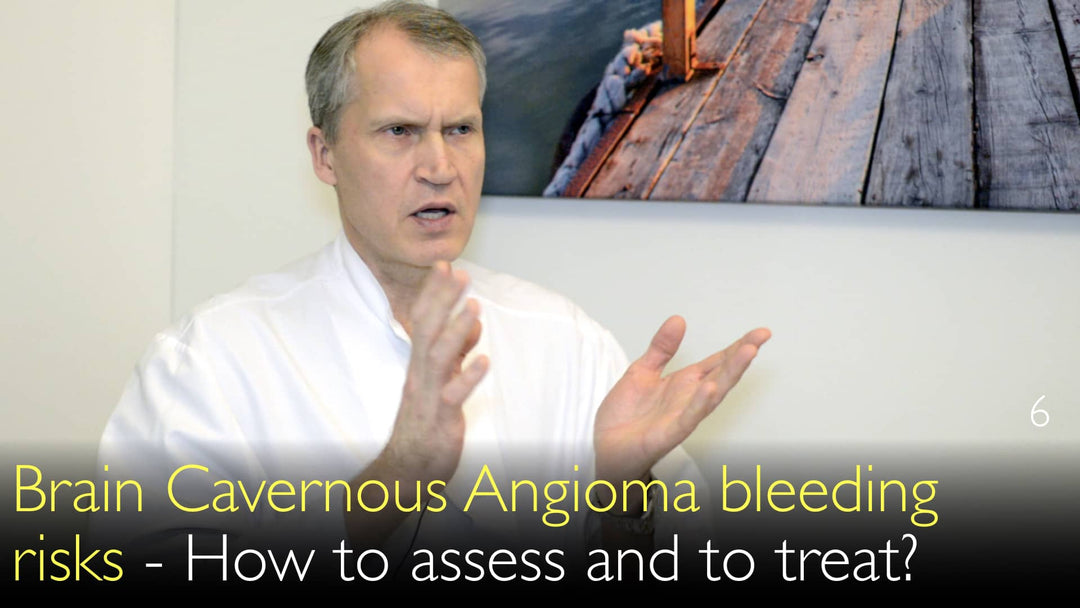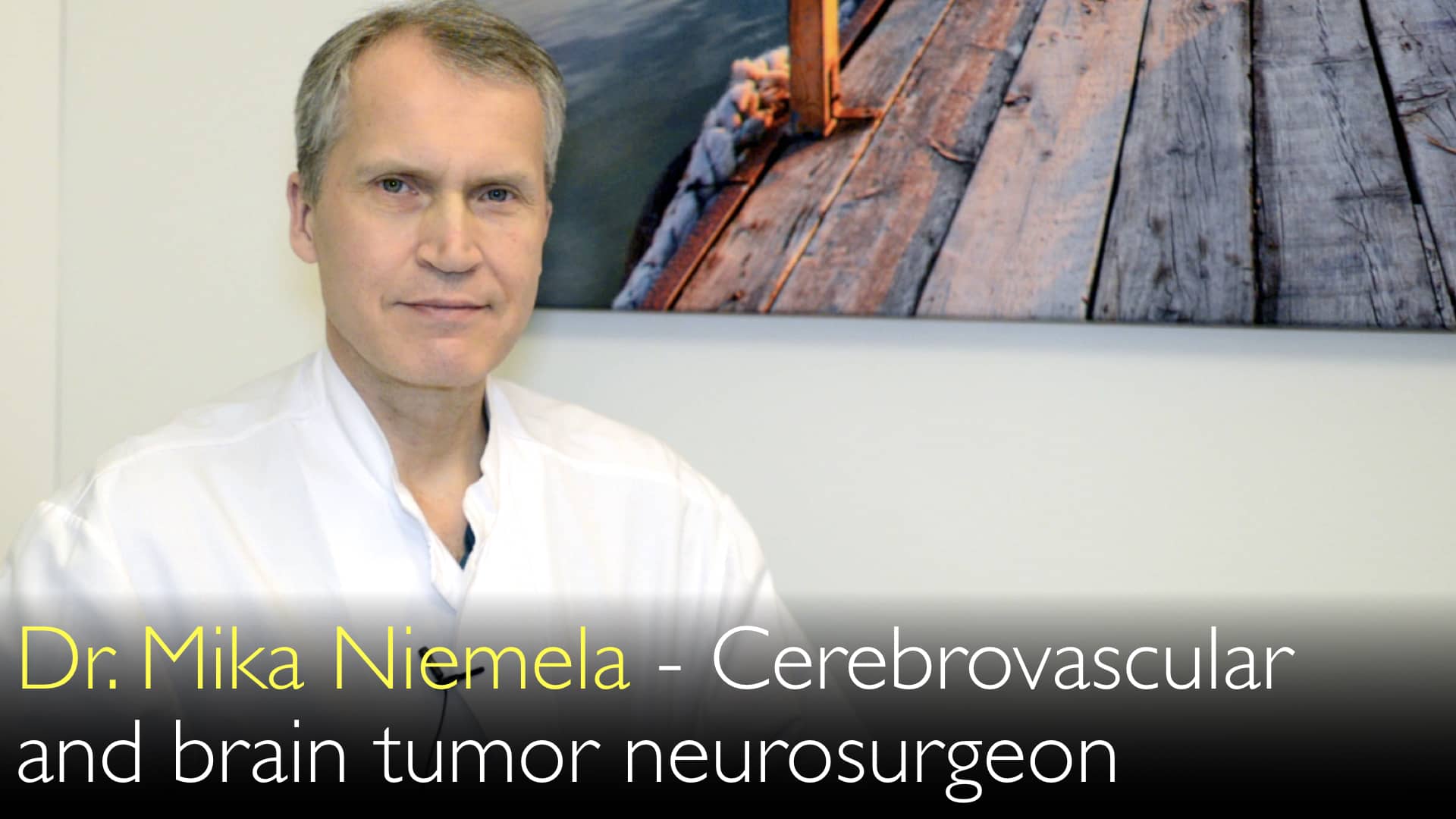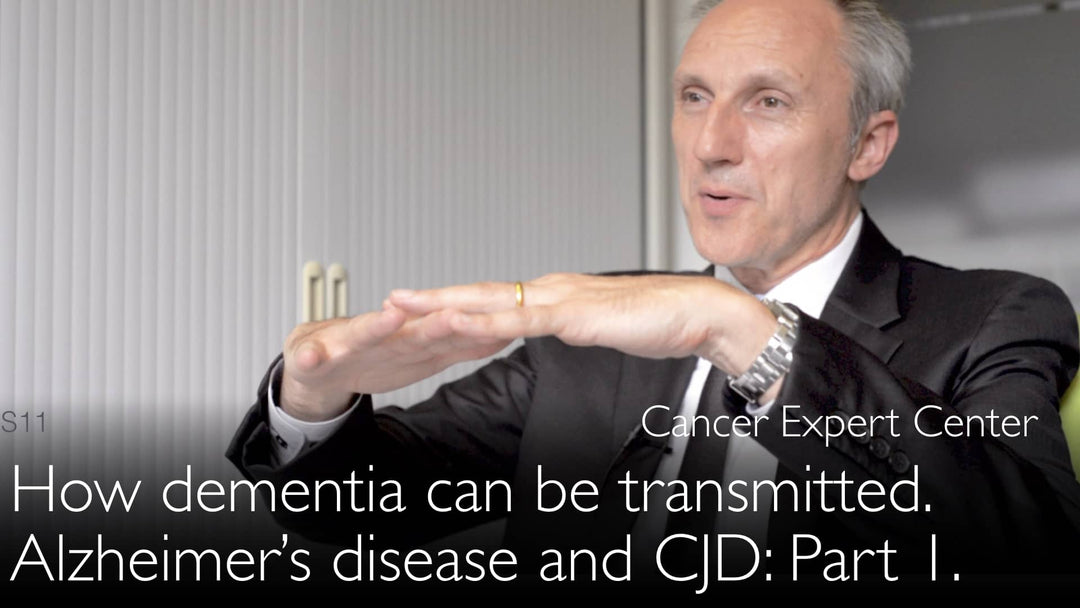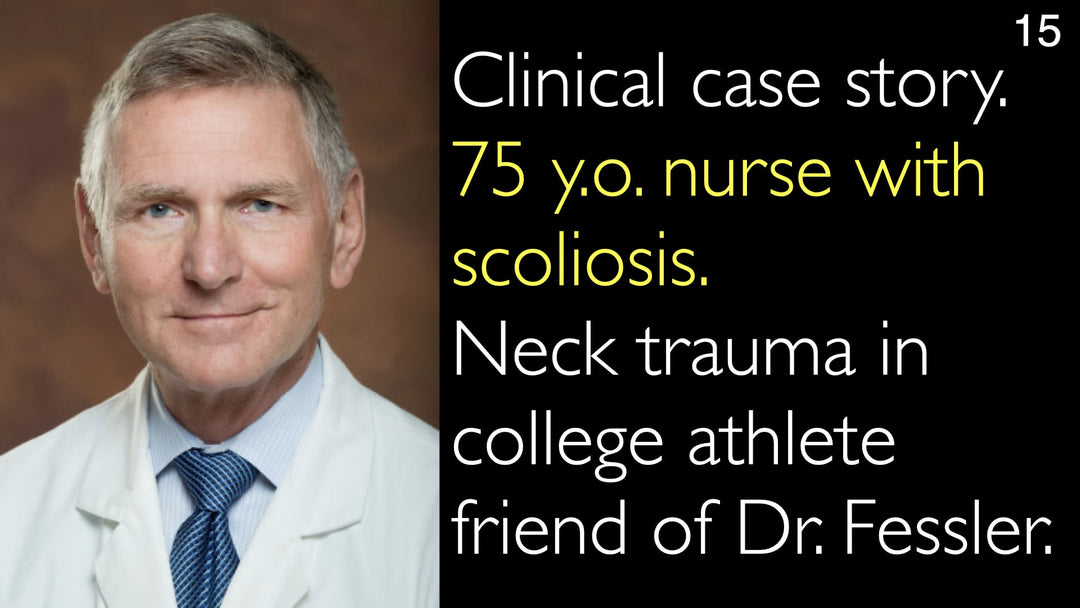O renomado especialista em neurocirurgia cerebrovascular, Dr. Mika Niemela, explica os riscos de sangramento associados ao angioma cavernoso cerebral. Ele detalha como o risco de hemorragia varia conforme a localização e o tamanho do cavernoma. O Dr. Niemela discute os diferentes tipos de sangramento e seu impacto na vida do paciente, além de comparar as indicações de tratamento precoce e tardio para lesões sintomáticas e assintomáticas. A entrevista também aborda considerações específicas para cavernomas no tronco encefálico e na medula espinhal, bem como estratégias de tratamento em pacientes idosos.
Riscos de Sangramento do Angioma Cavernoso Cerebral e Decisões de Tratamento
Ir para a Seção
- Fatores de Risco de Sangramento do Angioma Cavernoso
- Tipos de Hemorragia do Cavernoma e Impacto
- Indicações de Tratamento Precoce versus Tardio
- Considerações Especiais para Cavernomas do Tronco Encefálico
- Manejo do Angioma Cavernoso Espinhal
- Tratamento do Cavernoma em Pacientes Idosos
- Transcrição Completa
Fatores de Risco de Sangramento do Angioma Cavernoso
A avaliação do risco de sangramento do angioma cavernoso cerebral é crucial para as decisões de tratamento. O Dr. Mika Niemela, MD, identifica dois fatores de risco primários: o tamanho da lesão e a localização anatômica. Ele afirma que cavernomas localizados profundamente no cérebro e de maior tamanho estão associados a um risco aumentado de hemorragia. Curiosamente, o Dr. Niemela esclarece que fatores de risco vasculares convencionais, como hipertensão e tabagismo, não influenciam o sangramento nessas malformações vasculares específicas. Os pacientes não podem modificar seu risco individual de sangramento por meio de mudanças no estilo de vida, uma vez que o comportamento do cavernoma é determinado principalmente por características estruturais intrínsecas.
Tipos de Hemorragia do Cavernoma e Impacto
O sangramento do angioma cavernoso pode se manifestar de diferentes formas, com impactos variados. O Dr. Mika Niemela, MD, explica que as hemorragias podem variar desde micro-hemorragias clinicamente silenciosas até eventos sintomáticos significativos. Alguns sangramentos ocorrem apenas na superfície cerebral, sem causar sintomas neurológicos. Essas hemorragias menores podem não exigir intervenção imediata. No entanto, outros sangramentos podem causar déficits neurológicos substanciais, dependendo da área eloquente do cérebro afetada. O impacto clínico determina se a intervenção cirúrgica se torna necessária para a remoção do cavernoma.
Indicações de Tratamento Precoce versus Tardio
O momento do tratamento para o angioma cavernoso cerebral depende de múltiplos fatores clínicos. O Dr. Mika Niemela, MD, enfatiza que episódios repetidos de sangramento do cavernoma pioram o prognóstico do paciente. Isso é particularmente relevante para o desenvolvimento do risco de epilepsia após múltiplas hemorragias. O Dr. Anton Titov, MD, discute o processo de tomada de decisão clínica com o Dr. Niemela. Ambos concordam que cavernomas assintomáticos, sem histórico de sangramento, frequentemente podem ser manejados de forma conservadora, com observação. No entanto, lesões sintomáticas ou aquelas com hemorragia documentada exigem uma abordagem diferente. A excisão cirúrgica torna-se indicada quando os riscos de sangramento futuro superam os riscos da intervenção.
Considerações Especiais para Cavernomas do Tronco Encefálico
Os angiomas cavernosos do tronco encefálico apresentam desafios únicos de manejo devido à sua localização crítica. O Dr. Mika Niemela, MD, destaca que mesmo pequenas hemorragias no tronco encefálico podem causar problemas neurológicos significativos. A anatomia compacta do tronco encefálico significa que sangramento ou edema mínimo pode afetar múltiplas funções vitais. O Dr. Niemela desaconselha a observação passiva para cavernomas do tronco encefálico que já sangraram. As decisões de tratamento devem considerar a localização específica dentro do tronco encefálico e o tamanho da lesão. O neurocirurgião deve equilibrar a história natural do cavernoma contra os riscos cirúrgicos nessa região delicada.
Manejo do Angioma Cavernoso Espinhal
Os angiomas cavernosos espinhais exigem estratégias de manejo particularmente atentas. O Dr. Mika Niemela, MD, explica que cavernomas na região espinhal podem causar problemas substanciais quando sangram. O espaço confinado do canal vertebral significa que mesmo sangramento moderado pode comprimir estruturas neurais. Essa compressão pode levar a déficits neurológicos significativos. O Dr. Mika Niemela, MD, enfatiza que a intervenção cirúrgica é tipicamente indicada uma vez que um cavernoma espinhal demonstrou comportamento de sangramento. A decisão de operar equilibra os riscos da cirurgia contra o potencial de lesão neurológica catastrófica por hemorragia futura.
Tratamento do Cavernoma em Pacientes Idosos
Pacientes idosos com angiomas cavernosos cerebrais frequentemente recebem abordagens de manejo diferentes. O Dr. Mika Niemela, MD, observa que os neurocirurgiões tendem a ser mais conservadores com o tratamento em populações mais idosas. Essa abordagem conservadora considera o estado geral de saúde do paciente e os potenciais riscos cirúrgicos. O Dr. Anton Titov, MD, discute essa estratégia de manejo específica para idade com o Dr. Niemela. As decisões de tratamento ainda dependem dos sintomas, tamanho e localização do cavernoma. No entanto, o limiar para intervenção pode ser maior em pacientes idosos comparado a indivíduos mais jovens. A maioria dos cavernomas em todas as faixas etárias é manejada por observação em vez de excisão cirúrgica.
Transcrição Completa
Dr. Anton Titov, MD: A decisão de tratar o cavernoma cerebral depende da avaliação do risco de sangramento do angioma cavernoso. O risco de hemorragia depende da localização do cavernoma no cérebro.
Dr. Anton Titov, MD: Quais são os fatores de risco para sangramento do angioma cavernoso cerebral? Quais são os diferentes tipos de sangramento do cavernoma cerebral? Que tipo de hemorragia do cavernoma cerebral pode afetar a vida do paciente?
Dr. Anton Titov, MD: Quais tipos de sangramento do angioma cavernoso exigem tratamento precoce ou tardio do angioma cavernoso no cérebro?
Dr. Mika Niemela, MD: Não há fatores de risco conhecidos para sangramento do cavernoma cerebral, exceto o tamanho e a localização profunda. Mas os pacientes não podem influenciar o sangramento de forma alguma. Pressão arterial e tabagismo não têm significado nessas lesões.
Dr. Mika Niemela, MD: Mas se o angioma cavernoso for profundo e maior, então o risco de sangramento é maior.
Dr. Anton Titov, MD: Como você compara as indicações para tratamento precoce versus tardio do angioma cavernoso cerebral? Você fez algumas pesquisas clínicas sobre os resultados do tratamento do cavernoma cerebral.
Dr. Mika Niemela, MD: Às vezes o paciente tem vários sangramentos do cavernoma. Então o prognóstico é pior do que se o cavernoma tivesse sido removido mais cedo. Isso se aplica ao risco de epilepsia.
Dr. Mika Niemela, MD: Este prognóstico pior também se aplica ao cavernoma espinhal. Um cavernoma na região espinhal pode ser um problema. O cavernoma espinhal pode causar um sangramento significativo. Então é um problema. É melhor remover o cavernoma nesse ponto, no máximo.
Dr. Anton Titov, MD: Você não deve observar passivamente pacientes com tal angioma cavernoso. Mas o sangramento do cavernoma pode ser muito pequeno. O sangramento pode estar apenas na superfície do cérebro. O paciente pode não ter sintomas.
Dr. Anton Titov, MD: Então você pode observar um paciente com tal cavernoma na área cerebral. Mas você não pode observar pacientes com um angioma cavernoso do tronco encefálico que já sangrou.
Dr. Mika Niemela, MD: Porque mesmo um sangramento menor no tronco encefálico pode ser problemático. Mas isso também depende do tamanho e localização do cavernoma dentro do tronco encefálico.
Dr. Anton Titov, MD: Você acompanhou pacientes com cavernoma cerebral que são idosos. O tratamento do angioma cavernoso no paciente idoso pode ser diferente de um paciente mais jovem. Tendemos a ser mais conservadores.
Dr. Anton Titov, MD: O tratamento do angioma cavernoso depende dos sintomas do paciente e do tamanho e localização do cavernoma. Mas não necessariamente. A maioria dos cavernomas cerebrais é apenas observada. E às vezes excisamos todo o cavernoma.








